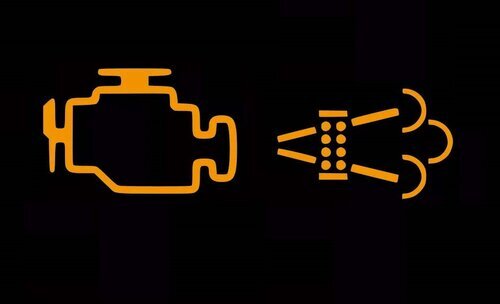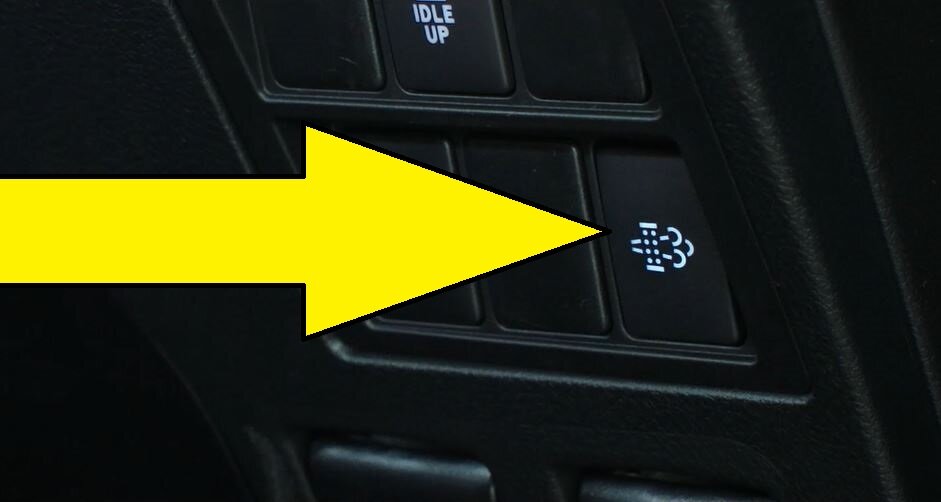Your DPF warning light just came on: What should you do?
It’s unsettling, but if your diesel particulate filter warning light comes on here’s what you do…
When your DPF warning light comes on, remember this: Orange warning lights are sub-critical events.
You need to act, but it’s not life and death for your engine.
Red warning lights, on the other hand, are reserved for engine life and death.
USEFUL DIESEL & DPF LINKS
Does engine capacity matter in modern diesels? >>
Modern DPF problems: The Truth, so help me >>
Everything wrong with Australia’s top 10 4x4 utes >>
Practical engine run-in advice for tradies with utes >>
Do diesel engines actually run lean? >>
Fuel shelf life: How long is too long? >>
So, vehicles are subtly different, and the DPF light activation scheme varies. Consult the owner’s manual, and do what it says.
A flashing orange DPF light (or whatever the primary activation mode is) just tells you that the filter is getting loaded up, and a burn or regeneration is necessary and/or overdue.
The car knows this because it measures the pressure drop across the DPF. More pressure drop equals more clogging equals need to regenerate now. Regeneration is usually seamless and automatic, in the background, but for some reason this has fallen over on your vehicle.
So as soon as you can, get out on the highway and go for a free-flowing cruise. Make it a priority because not addressing this will get expensive. Aim for about an hour of cruising - 50 kays one way, and return (ish). So, 100 all up.
Don’t shift to second and rev the crap out of the engine on some quiet suburban street, or try any other cockamaime hack to regenerate - specific conditions need to be met before a filter regenerates.
Highway cruising is the easiest way to meet those conditions. If the light goes out, it worked. Excellent. If not, you need to visit a workshop. It can be a dealership or an independent workshop, but if it’s an independent make sure they’re familiar with this problem.
They can plug in to the diagnostic port and force the vehicle to do an aggressive regen in the service bay. And that might turn the car’s DPF frown upside-down. If that doesn’t work, you can look at getting the DPF cleaned. They can inject special solvent and attempt breaking up the blockage. It’s worth a shot - because this is much cheaper than a replacement DPF.
If that doesn’t work and you’re up for a new DPF, the cost of the genuine unit from the authorised dealer might just about give you heart failure. They do typically charge an arm and a leg for these things.
Before agreeing to the cost, investigate aftermarket solutions. As DPFs proliferate on our roads, the economies of scale producing good quality aftermarket units keep improving. This could save you a few hundred to a few thousand dollars, depending on the vehicle.
PRO TIPS for DPFs:
Prioritise your DPF gets adequate routine highway driving to allow regenerative process to happen
Use a qualified technician knows what they’re doing to service your DPF: Don’t be scared to ask.
Ensure the correct low-ash oil has been used during servicing: Again, ask, write it down.
Confirm appropriate computer settings have been reset: Eg. oil dilution reset
DPF problems are symptoms (typically) of the core problem: Eg. Warning light = blockage. Blockage = inadequate highway driving.
Remember: Owner abuse is how manufacturers escape warranty claims - DPF abuse is very much part of that. If you have a serious DPF failure and they can argue the case for inadequate driving conditions, you could be forced to pay for your repairs.
Cause and effect
A couple of other things to realise.
Most DPF problems are caused by a failure to do adequate highway driving. If you have a DPF-equipped vehicle, try to get out on the open road once a fortnight for about an hour, minimum.
The other thing to remember is that DPF faults are often symptoms, rather than the core problem itself.
DPF warning lights herald a blockage, but the blockage can be a symptom that (perhaps) you’re not doing enough highway driving. But it can also be symptomatic of a more malicious (and harder to diagnose) problem.
For example, if there’s an air leak in the inlet, after the turbo and the MAF sensor, then the MAF sensor will read too high (relative to the air that’s actually making it into the engine). The car is then going to over-fuel continuously.
When that happens, particle production goes through the roof, and the filter keeps clogging. The symptom is the clogging. The disease is the crack in the inlet air plumbing. If you don’t cure the disease, the symptoms will just keep popping up.
So what I’m saying here is you often need a really good mechanic with high-level fault finding skills to get to the bottom of this. Dealerships don’t often have these skills, and it’s easy to get trapped into this ‘Groundhog Day’ / DPF death / hell on earth experience where you pay the big bucks, replace the DPF, and then it just dies again, repeat.
If that happens, this is the massive wake-up call that the repairer is treating the symptom and not the disease.
So if your DPF warning light, lights up, don’t panic. It’s not an emergency. But don’t ignore it either - because it’s not going away unless you act.
And if you do ignore it, the problem’s just gunna get worse. Meaning ‘much more expensive’.



















xxxx